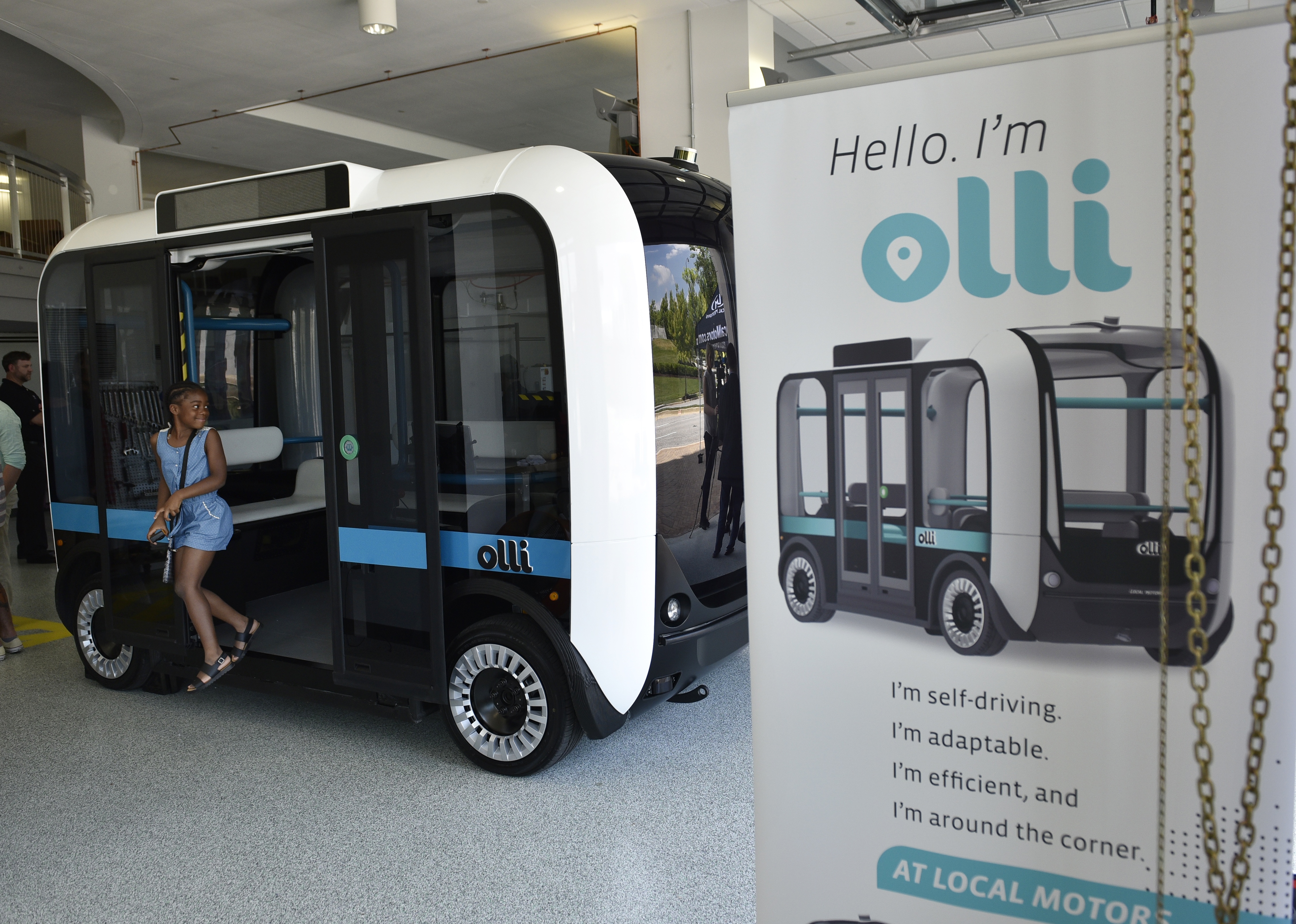

by Rob Lever
NATIONAL, HARBOR, United States (AFP) — A new maker of self-driving vehicles burst onto the scene Thursday in partnership with IBM’s supercomputer platform Watson, and it’s ready to roll right now.
The vehicle — a 3D-printed minibus called “Olli” capable of carrying 12 people — was unveiled by Arizona-based startup Local Motors outside the US capital city Washington.
Olli was designed as an on-demand transportation solution that passengers can summon with a mobile app, like Uber rides. And it can be “printed” to specification in “micro factories” in a matter of hours.
Olli will be demonstrated in National Harbor, Maryland, over the next few months with additional trials expected in Las Vegas and Miami. Local Motors is also in talks to test the vehicles in dozens of cities around the world including Berlin, Copenhagen and Canberra.
Even though Google and several automakers see several years of testing before deploying autonomous cars, Local Motors co-founder and chief executive John Rogers said this vehicle is ready to go into service as soon as regulations allow it.
“The technology has been ready — fielding it is what has been hard,” he said in an interview with AFP.
By “fielding,” Rogers said Local Motors can design and make the vehicles to specification and offer a service to local governments or other buyers.
“Local Motors is about selling (the vehicles) into the markets that are ready now,” he said.
Rogers said the company has an advantage over other systems because it is building the vehicles from the ground up, and producing most components with 3D printers.
“We hope to be able to print this vehicle in about 10 hours and assemble it in another hour,” he said.
He envisions hundreds of “micro-factories” producing the vehicles around the world.
The privately held company with about 45 investors can easily revamp its design based on what a customer wants, and lacks the large infrastructure costs of traditional automakers, according to Rogers.
The Watson experience
The driving is controlled by a system developed by Local Motors with several software and tech partners. IBM is not doing the driving but is providing the user interface so passengers can have “conversations” with Olli.
“Watson is bringing an understanding to the vehicle,” said IBM’s Bret Greenstein.
“If you have someplace you need to be you can say that in your own words.”
It marks IBM’s first venture in fully autonomous driving, although it has worked with other automotive partners on technology solutions.
Greenstein said IBM sees Olli as “the first complete solution” for autonomous driving, and makes use of Watson’s cognitive computing power.
Using “natural language” recognition can help create “a relationship between the passenger” and the vehicles, Greenstein said.
“A vehicle that understands human language, where you can walk in and say, ‘I’d like to get to work,’ that lets you as a passenger relax and enjoy your journey,” he said.
The vehicle relies on more than 30 sensors and streams of data from IBM’s cloud.
With Watson, passengers can ask about how the vehicle works, where they are going, and why Olli is making specific driving decisions. And it can answer the dreaded driver question “Are we there yet?”
It also can offer recommendations for popular restaurants or historical sites based on the personal preferences of the passenger.
“Cognitive computing provides incredible opportunities to create unparalleled, customized experiences for customers, taking advantage of the massive amounts of streaming data from all devices connected to the Internet of Things, including an automobile’s myriad sensors and systems,” said IBM’s Harriet Green in a statement.
The company said Las Vegas has purchased two of the vehicles and Miami-Dade County is exploring a pilot program in which several autonomous vehicles would be used to transport people around the Florida region.
Rogers said the company has had discussions in at least 50 countries where there is interest in new transportation solutions.
“There is a long list of cities that are interested,” he said.
rl/sg
© 1994-2016 Agence France-Presse
